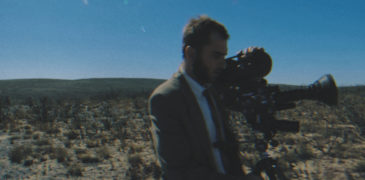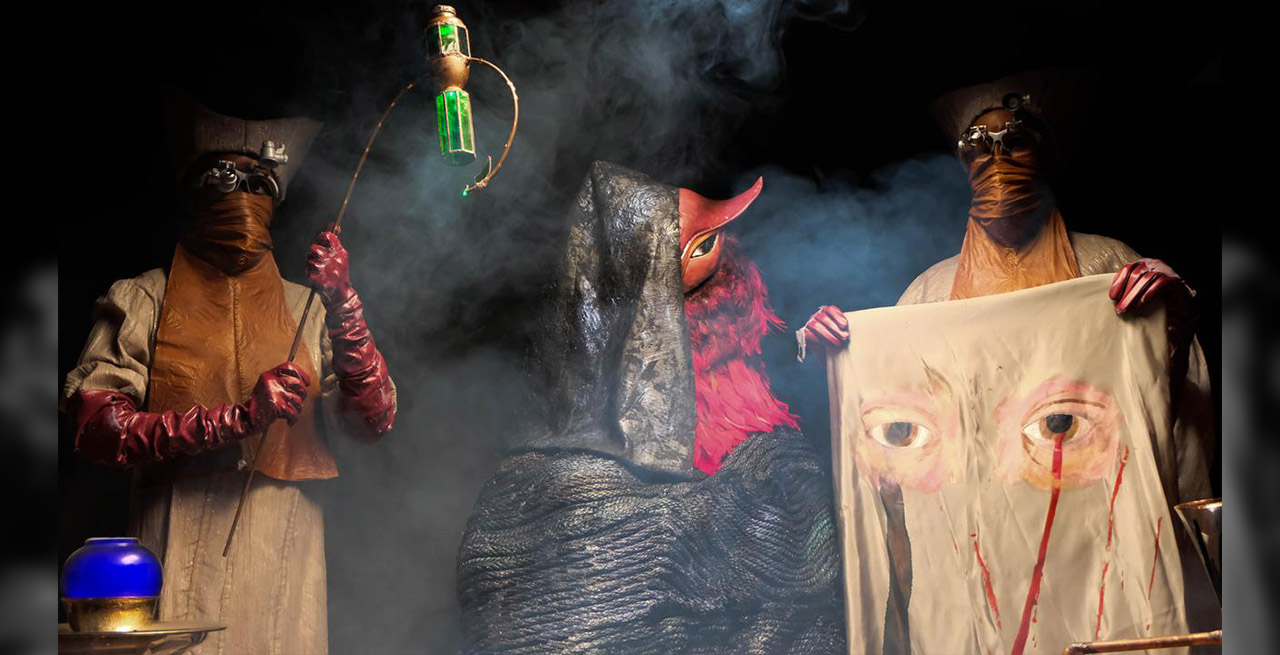
A Wounded Fawn opens with a quote from Surrealist painter and author Leonora Carrington: “I suddenly became aware that I was both mortal and touchable and that I could be destroyed“. Centering the film around a serial-killer protagonist who slowly comes to the same realization, director Travis Stevens (Girl on the Third Floor, Jakob’s Wife) pits a modern-day satyr against the Erinyes, the Greek goddesses of revenge. The result is a compelling watch, with its often spellbinding shifts and turns, although it struggles to be more than the sum of its parts – especially in terms of predictability.
The film’s protagonists, Bruce and Meredith, both inhabit the art world. Meredith has just ended a bad relationship, and after a tense auction scene, we see Bruce murdering a woman in her own home and claiming a valuable object for himself – a sculpture depicting the Erinyes in action. Meredith brags about her new partner to her friends, but the man turns out to be none other than Bruce, and they set off to his cabin for what Meredith would like to be an unforgettable night of wine, dancing, and music.
The word “faun” was sometimes spelled “fawn” in early English use, with the agreed-upon meaning of the word now being “the young of a species, generally deer”. Although the dying fawn has been widely used in poetry, including by Emily Dickinson and, more recently, David Mason and Fray Narte, it is generally a symbol of compassion and hope. This is why in Stevens’ film, the word could carry a double meaning. Fauns, or satyrs, are male nature spirits in Greek and Roman mythology, with horse or goat-like legs, associated with sexual violence, debauchery, lust, and the gods Bacchus and Pan. Meanwhile, the Erinyes (also known as the Furies) are underworld deities who punish “blood crimes” and familial transgressions. In “Why are the Erinyes Female? or, What is so Feminine about Revenge?“, Edith Hall mentions that in Greek thought, “acts of blood revenge were typically enacted by men against other men to preserve their honour and attack their enemies”, arguing that the Furies should be seen as transgender while drawing parallels to the imagery of the Gorgon and Medusa.
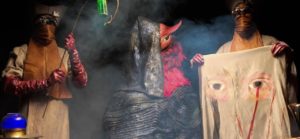
The production is divided into two tonally different acts, the first one delighting viewers with its attention to detail. Stevens establishes important details through visual cues, such as Meredith owning art books by Marina Abramovic, Remedios Varo and Kati Horna, or two gallery patrons exchanging hateful glances when Meredith and her friends banter without a care in the world. During the long drive, Meredith discusses abusive men, how good they are at hiding, and her refusal to forgive those who transgress. When Bruce asks about her thesis, she responds that it’s about deconstructing the idea of the muse. A Wounded Fawn ends up deconstructing both the muse and the satyr (which, in popular culture, has all but merged with the more benevolent faun), but it is more successful as the latter, especially since The Sandman has recently delivered an episode about the Greek muse Calliope based on a much more thought-provoking story.
A Wounded Fawn is mainly a supernatural revenge horror film, constructing a limbo around its serial-killer protagonist, not with the purpose of making him repent, but rather to make him realize his vulnerability in the face of a greater power, his undoing coming because of the very actions that he glorified. One big pitfall that the supernatural revenge genre has to overcome is one that A Wounded Fawn seems willing to address at times: if there are deities who exist solely for exacting revenge on the villain, why aren’t there any gods whose purpose is to protect them and ensure they create even more chaos? Are the gods of trickery, death and war sleeping, have they been bribed to avert their eyes? Even if we go with the idea that Justice is the greatest power in these films, there is still the question of Destiny – was this villain protagonist fated to be like this from the very start?
The film does find a lot of excuses for Bruce: he’s seen a lot, had the childhood of a typical Bukowski protagonist and has visions of a giant, anthropomorphic owl whenever he’s ready to deal the killing blow. It is this Dexter-like excuse, this “dark passenger” that he claims is behind the killings, and that he’s actually a kind man, unable to control his urges. We’ve all heard this before, of course, and it doesn’t add any value to the production, which struggles but fails to maintain a balance between Meredith’s and Bruce’s perspectives. Meredith’s character suffers a lot because of the emphasis on Bruce’s psychology, especially since everything is telegraphed from the start: with the exception of a cruel twist, we know exactly where all of this is heading (and no, the giant owl doesn’t make any difference). It’s much more successful as the deconstruction of a mythical opposition, that of debauchery, sexual abuse and murder coming against female wrath and catharsis. It also has a huge reason for existing in the first place: Bruce, sharing elements of the satyr, as well as his owl companion, can be seen as the (almost) mythical elements opposing the Erinyes, giving him a fighting chance. (Because if the villain protagonist doesn’t stand a chance, why make him the protagonist at all? This is another problem supernatural revenge films with protagonists like Bruce have to overcome – the classical storytelling’s “need” for heroes and the hero’s journey vs. the modern trend of “demythicizing” classical heroes).
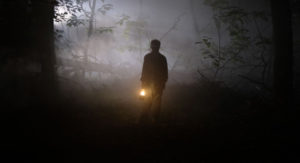
The depiction of the Erinyes is entirely satisfying, with Stevens also making use of the Medusa and Gorgon imagery, theatre masks and a grindhouse-like visual palette. At its best, A Wounded Fawn finds the same inspiration which characterized recent films like Fresh or The Feast (and at its worst, it is Toran Caudell’s GetAway – more exploitative and random than it should have been). Bruce is played by Josh Ruben – the director of Scare Me and Werewolves Within – who pulls off a great transformation, similar to that of Seann William Scott in Bloodline: going from Stifler-like disarming charm to unhinged murderer. Stevens injects a lot of humor into his Fawn, including a sudden shift to the home invasion genre, Bruce going from fully confident to constantly begging and running for his life. The highlight ends up being a “Hannibal-lecture” on being damaged, beauty and impulses, as well as the wickedly funny response to it.
Sarah Lind (Shevenge, Jakob’s Wife, Exquisite Shorts) does a lot to establish Meredith’s personality, from nervous ticks to a wide range of reactions, but that’s the problem right there: her character is mainly there to react to whatever Bruce does. In the second act, Meredith does go through an awakening, a rebirth of sorts, even delivering a killer line of dialogue to Bruce, but the fact remains that this would have been far more satisfying as a pure slasher, or a Surrealist film like Amanda Kramer’s Paris Window. It feels like Stevens had all the ingredients, but your mileage may vary on how good they come together in the end, and whether it will strike you as anything more than a haphazardly-stitched-together Frankenstein monster.
Ultimately, A Wounded Fawn is a good deconstruction that benefits from striking visuals, great sound design, amazing central performances, inspired dialogue, and a dark sense of humor, but the problem lies in the nature of the subgenre and the fact that Stevens fails to transcend its limitations (unlike, say, Romola Garai’s Amulet, still the shining example of the recent “new-wave” supernatural revenge). So far, films that acknowledge that revenge is a human act, with devastating repercussions, while also imbuing their avengers with mythical qualities (Resurrection, Violation and Ditched almost forming the triangle of the neo-revenge thriller), still manage to resonate far better than anything A Wounded Fawn pulls from its trippy horror hat. However, some scenes are worth seeing twice for their audacity, and sometimes you really have to appreciate a production for trying.
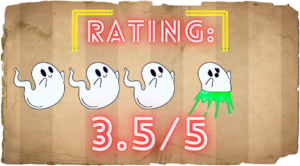
We Watched A Wounded Fawn (2022) As Part of FrightFest
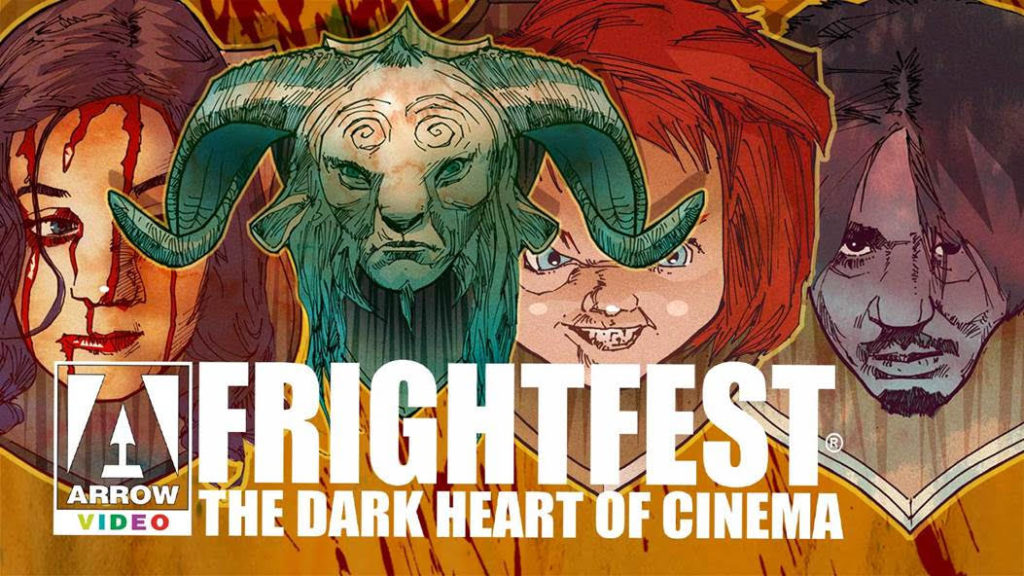
Past Festival Coverage
The Internet Age has transformed us in so many ways, even down to the way we tell stories to keep pace with advancing technology. Our fledgling fixation on screens has… The Dead of Night Film Festival is Merseyside, England’s only dedicated horror film festival. It ran across the 1st and 2nd of October for its sixth year at The Bijou… Leading into the build-up of the release of Pet Sematary Bloodlines, viewers had reasons to be cautiously optimistic about the project after the success of Paramount breathing new life into… Part of the JFFH (Japan Film Fest Hamburg) 2021 line-up, Kenya Okuba’s Cosmetic DNA was a title that instantly caught my attention with the flashy trailer promising a techno-laden, neon-drenched… In 1967, four South African Republican Intelligence Agents respond to a mysterious object crash landing on a farm, playing out to offer South Africa’s first found footage horror movie. They… Post-apocalyptic films after a pandemic certainly seem poised to hit their stride, with the horror genre acting as a cathartic release from modern day anxieties. Enter Glasshouse, the debut from…The Collingswood Story (2002) Film Review – A Pioneering Screenlife Film
The Dead of Night Film Festival 2022
Pet Semetary Bloodlines (2023) Film Review – A Welcomes Return to Ludlow [Fantastic Fest]
Cosmetic DNA Film Review (2020) – Fashionable Androcide
Wesens (2020) Film Review – A Subversive Mystery From The Afrikaans Sky
Glasshouse (2021) Film Review – Horror of Fleeting Memories

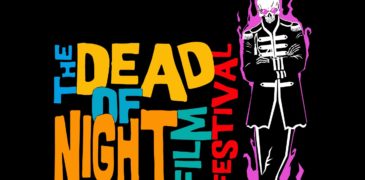
![Pet Semetary Bloodlines (2023) Film Review – A Welcomes Return to Ludlow [Fantastic Fest]](https://www.grimoireofhorror.com/wp-content/uploads/2023/09/pet-sematary-bloodlines-feature-365x180.jpg)

